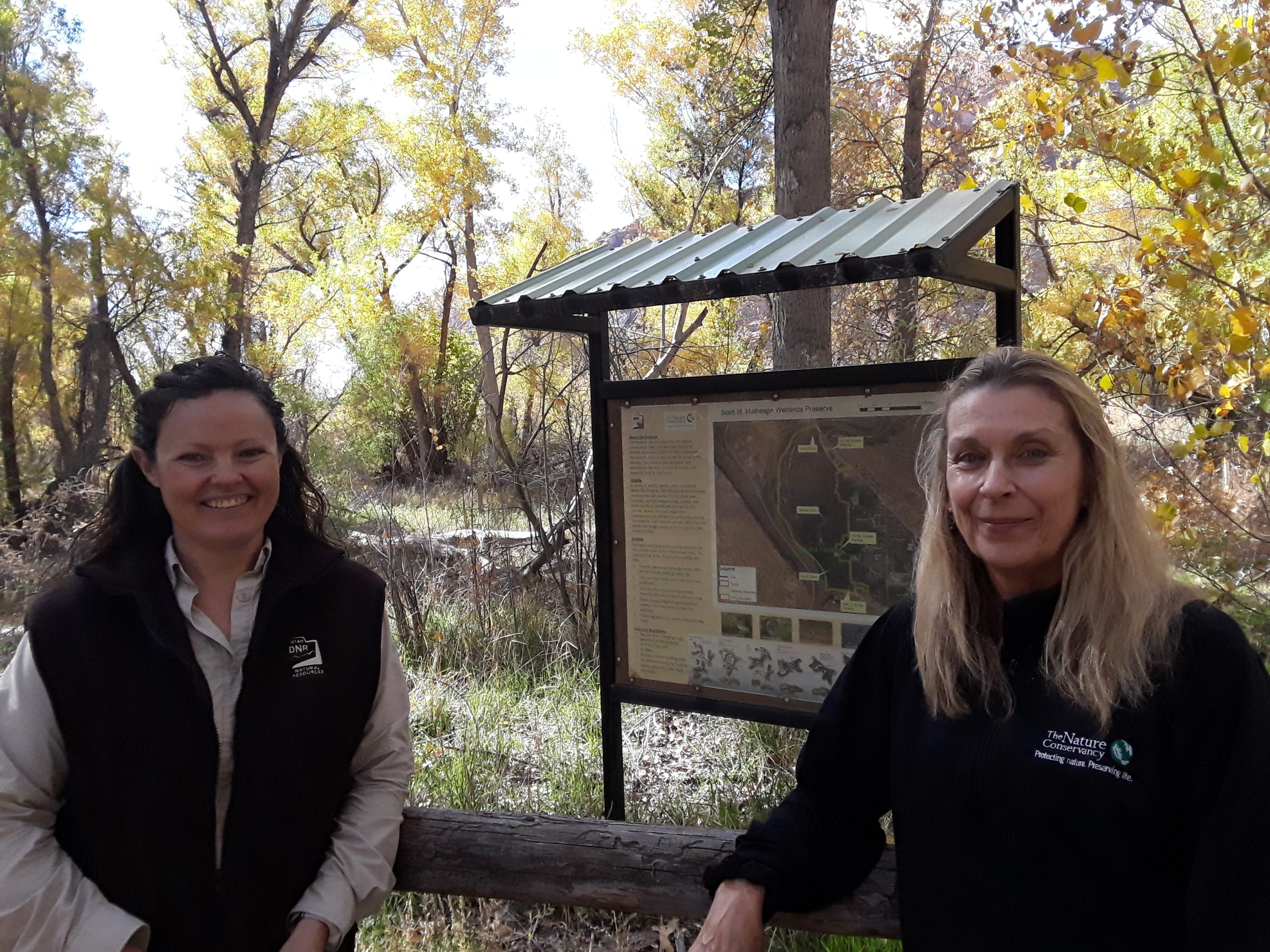Some information may be outdated.
Scientists are learning more about what is required to successfully spawn wild razorback suckers in the Colorado River, and a new project at the Scott M. Matheson Wetland Preserve seeks to better understand the habitat of the endangered fish.
Once abundant in the Colorado River Basin, just eight razorback suckers were found in the river downstream of Moab during surveys in 1962-64. Subsequent surveys by the Utah Department of Wildlife Resources found that very few razorback suckers survive to adulthood, and the fish was placed on the endangered species list in 1991.
Today, there is no population estimate on the number of razorback suckers in the Moab area, said Katie Creighton, Utah Division of Wildlife Resources Native Aquatics Project Leader in Moab.
“We’ve been stocking a fair amount,” Creighton said.
Successful spawning projects and collaborative efforts to restore the fish’s habitat and remove nonnative predators have helped to increase the population of razorback suckers in the Colorado, Green and San Juan rivers, prompting the U.S. Fish and Wildlife Service on Oct. 4 to recommend the fish’s protection status be changed from endangered to threatened.
Patrick McCarthy, a conservation director in New Mexico for The Nature Conservancy, has led projects on the San Juan River to help save the razorback suckers.
“If the razorback sucker is reclassified from endangered to threatened as the U.S. Fish and Wildlife Service is recommending — and it’ll take more than a year for a final decision to be made — it’ll mean that the collaborative efforts of water users, federal and state agencies, and tribes have brought this species back from the brink of extinction in less than the lifespan of a single fish (about 40 years) — a remarkable achievement for such a wide-ranging, long-lived species,” McCarthy said.
Now, similar work is being replicated along the Colorado River near Moab. State and federal agencies are partnering with The Nature Conservancy to construct a fish nursery for razorback suckers at Scott M. Matheson Wetland Preserve. Among the agencies involved with the project are Forestry, Fire and State Lands, Moab Area Watershed Partnership, Utah Watershed Restoration Initiative and the Utah Division of Water Quality.
A channel is being constructed from the Colorado River to the wetland’s central pond, which will allow more water into the preserve during spring runoff, therefore allowing the larvae to travel from the river into the wetland, where they have more protection, said Creighton.
“We’re learning a lot about what those fish need in terms of habitat requirements,” Creighton said. “What we’ve figured out is one of the main issues that they’re having is getting from the larval stage, which is right after they hatch, into the juvenile stage. A lot of that is because of altered flow regimes, but one of the big components of that is razorback sucker larvae really rely on off-channel habitat, like the Matheson Wetland or other floodplain areas, to grow big and strong.”
Scoot Flannery, the project engineer, surveyed the area for the project on Friday, Nov. 2.
“It basically consists of about 1,500 linear feet of channel that ties into the Colorado River,” Flannery said. “There’s a structure that is made out of concrete that is over 100 yards of concrete that allows water in and out. At the end of the channel on the other side there is a 300- by 100-square-foot pond.”
To keep the fish in the wetland, a control screen will be installed that can be opened to release the fish once they have matured.
Excavation is planned to begin by Nov. 9.
Morgan Jacobsen, conservation outreach manager at the Utah Division of Wildlife Resources (DWR), met with Flannery, Creighton, and the wetland’s co-managers, Linda Whitham with The Nature Conservancy and Nicole Nielson, DWR habitat manager, at the wetland to discuss the upcoming excavation.
“From the standpoint of the division, we work really hard to create opportunities to restore habitat for native species and species restoration,” Jacobsen said. “This project, when it’s completed, will be a major victory for the razorback sucker and the Colorado River and so we’re really excited about it.”
Zach Ahrens, a fish biologist at DWR, also expressed excitement for the new project.
“The Colorado River system has changed a lot in the last century, and wetland habitats like the Matheson Wetland Preserve aren’t as wet as they have been in the past,” Ahrens said. “By flooding it more often and for longer periods, we expect to provide crucial habitat that these fish have lost.”
The project’s leaders said the wetland’s central pond will be drained before the razorback sucker larvae are introduced, removing any nonnative fish that entered the wetland, and the depth of the pond will be increased to make the habitat larger.
“Research indicates our preserve is the only suitable wetland nursery habitat along 65 miles of the Colorado River,” said Whitham. “We’re thrilled to be part of this cutting edge effort to help the razorback suckers become self-sustainable once again.”
Whitham said the wetland’s pond is open to the public and may be accessed by walking over a stanchion at the trailhead located at the end of 400 North.
Agencies work to create spawning channel at Scott M. Matheson Wetland Preserve
“This project, when it’s completed, will be a major victory for the razorback sucker and the Colorado River and so we’re really excited about it.”
Appreciate the coverage? Help keep local news alive.
Chip in to support the Moab Sun News.





